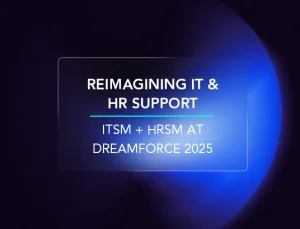- Posted on : July 22, 2025
-
- Industry : Corporate
- Tech Focus : Data & AI
- Type: Blog

How are consumer brands protecting margins in a rising trade costs environment?
As tariffs evolve from temporary disruptions to permanent market realities, consumer goods companies must shift from reactive pricing to strategic margin protection.
The New Tariff Reality
Tariffs have fundamentally altered the cost structure for consumer brands. From aluminum cans and paper packaging to ingredient sourcing and transportation, trade barriers systematically drive-up input costs across the consumer landscape.
The impact extends beyond raw materials. As Professor Laszlo Horvath from Virginia Tech's Center for Packaging and Unit Load Design explains, "Many packaging molds, which can cost millions, are made overseas. If a company orders a mold from Europe or China, and tariffs increase before it arrives, they suddenly owe more money. This increased cost is then passed down to consumers." (Virginia Tech News)
Real-world examples demonstrate the requisite urgency.
Coca-Cola is reexamining its packaging approach in response to tariff measures affecting imported aluminum from Canada, exploring alternative packaging options to manage potential price increases. (Nasdaq) This strategic pivot illustrates how market leaders proactively address tariff-driven cost pressures rather than accepting margin erosion.
Inaction can have a spiraling cost!
Industry leaders recognize that passive responses to tariffs threaten both profitability and competitiveness. Leslie G. Sarasin, president and CEO of FMI – The Food Industry Association, warns that tariffs "could bring rising prices, a squeeze on household budgets and reduced competitiveness for American companies relative to international competitors." (Progressive Grocer)
The food industry operates with skinny margins; just 1.6% for retail and 7.5% for manufacturing, making tariff impacts especially acute. This narrow margin environment means that traditional reactive approaches like blanket price increases or delayed pricing decisions can:
- Accelerate margin erosion in already constrained categories
- Trigger significant volume declines due to consumer price sensitivity
- Damage critical retailer relationships that demand pricing transparency and justification

McKinsey research suggests developing a tariff impact matrix to categorize portfolio exposure and drive targeted responses. (McKinsey) However, leading companies are adopting a more comprehensive approach through four strategic pillars:
- Portfolio-Based Margin Management
Margins vary significantly by product, pack size, geography, and channel. Successful companies treat margins as a strategic pool requiring optimization rather than uniform protection.
Case Study: A global food company used advanced cost modeling to identify that small-pack products in club channels faced the highest margin loss post-tariff. Rather than implementing across-the-board price increases, they optimized assortment and reallocated promotional investments to better-performing SKUs, successfully managing the overall margin pool.
Bain & Company research demonstrates that products vary substantially across cost and revenue dimensions, suggesting tariff impacts will differ significantly by product category and requiring tailored responses. (Bain & Company)
- Scenario-Based Pricing Intelligence
Price elasticity modeling and scenario engines enable companies to understand potential outcomes before implementing changes. Consumer response patterns differ markedly between discretionary and essential goods, making sophisticated modeling critical.
Case Study: A home care brand tested three price points for disinfectant spray following tariff implementation. Elasticity modeling revealed that a 5% increase would retain 95% of volume while protecting margins, significantly outperforming the initially proposed 10% increase.
Advanced simulation tools allow companies to model different scenarios while redirecting marketing spend to protect margins and minimize top-line impact.
- Integrated Marketing and Margin Strategy
Marketing investments must align with shifting margin dynamics rather than operating independently. Strategic reallocation toward higher-margin opportunities can improve overall ROI despite increased input costs.
Case Study: A dairy company redirected digital media budgets from low-margin promotional products to premium lines with superior retention characteristics. This strategic shift increased marketing ROI despite higher input costs.
Channel-specific margin differences further complicate the equation. McKinsey analysis shows significant variations in shipping costs and other margin drivers across distribution channels, requiring channel-specific strategies. (McKinsey CPG Insights)
- Decision Infrastructure and Governance
Rapid, informed decision-making requires robust infrastructure and cross-functional alignment:
- Centralized pricing intelligence platforms for real-time market visibility
- AI-powered simulation tools for market response modeling
- Cross-functional "margin councils" ensuring alignment between marketing, sales, and finance teams
Bain research demonstrates that companies implementing multi-lever Revenue Growth Management (RGM) approaches can significantly expand their profit pools, even in challenging cost environments. (Bain RGM)

Tariffs represent both a challenge and an opportunity. Companies that develop sophisticated tariff management capabilities can emerge stronger, with more resilient margin structures and enhanced competitive positioning.
Key Strategic Imperatives:
- Portfolio Thinking: Treat pricing and margin decisions as interconnected portfolio strategies rather than isolated product decisions
- Marketing Integration: Leverage marketing as a strategic margin protection tool, not merely a cost center affected by margin pressure
- Proactive Planning: Early scenario modeling and strategic preparation provide substantial advantages over reactive approaches
Companies that master these capabilities will not only survive tariff pressures but also use them as catalysts for building more sophisticated, data-driven pricing and margin management systems.
The tariff era demands strategic evolution. Organizations that embrace this challenge with comprehensive planning, advanced analytics, and cross-functional integration will emerge with sustainable competitive advantages that extend well beyond the current trade environment.
Additional References:
- McKinsey Distribution Blog: Navigating an Ever-Evolving Trade Environment
- Virginia Tech Tariff and Packaging Analysis
Infogain partners with businesses to implement scenario-based pricing models, margin intelligence platforms, and cross-functional decision-making tools that enable proactive navigation of market uncertainties, including tariffs and inflation. Our integrated approach helps organizations future-proof their pricing strategies while protecting and expanding margin pools in these challenging environments. To connect with us, write to info@infogain.com.





